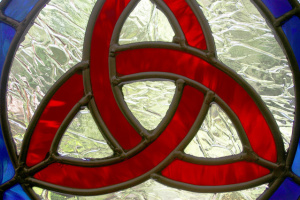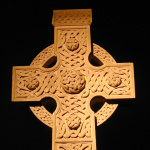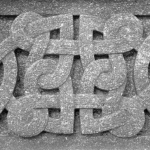Thursday 10 March to Sunday 25 September 2016
National Museum of Scotland, Chambers Street, Edinburgh
The first major British exhibition on the Celts for over 40 years will open at the National Museum of Scotland in Edinburgh on Thursday 10 March 2016.
 Produced in partnership with the British Museum, the exhibition draws on highlights from both collections, alongside spectacular treasures and the latest research from across Europe, to tell the complex and fascinating story of the different peoples who have been called or have called themselves Celts. In total, the exhibition, which is sponsored by Baillie Gifford Investment Managers, will feature over 350 objects from the collections of National Museums Scotland and the British Museum as well as 14 UK and 12 international lenders.
Produced in partnership with the British Museum, the exhibition draws on highlights from both collections, alongside spectacular treasures and the latest research from across Europe, to tell the complex and fascinating story of the different peoples who have been called or have called themselves Celts. In total, the exhibition, which is sponsored by Baillie Gifford Investment Managers, will feature over 350 objects from the collections of National Museums Scotland and the British Museum as well as 14 UK and 12 international lenders.
Dr Fraser Hunter, Principal Curator, Iron and Roman Age Collections, said:
“This is a once-in-a-lifetime chance to see masterpieces of Celtic art from all across Europe. These allow us to explore connections and differences across the Europe of 2000 years ago, to think about what the idea of Celts means, and to see the power that this art gave to objects which people cherished. This exhibition puts our Scottish finds into an international setting”.
The exhibition explores what these decorated objects can tell us about the complex idea of “Celts”. Celtic art was originally a Europe-wide phenomenon, making objects into powerful symbols reflecting status, connections and beliefs.
 Many of the objects have never been shown in Scotland, notably the Gundestrup Cauldron, one of the great treasures of the National Museum of Denmark. A visual feast of spectacular imagery, this massive silver vessel challenges simple ideas of a Celtic world by revealing a mix of influences from across Europe and into Asia some 2000 years ago. Another highlight loan is one of the masterpieces of the Bern Historical Museum, Switzerland, a Roman-period bronze statue of a goddess and a bear dedicated to Deo Artio. The goddess’ name is the Celtic word for bear, and the visual connection shows the influence of the Roman world on local beliefs.
Many of the objects have never been shown in Scotland, notably the Gundestrup Cauldron, one of the great treasures of the National Museum of Denmark. A visual feast of spectacular imagery, this massive silver vessel challenges simple ideas of a Celtic world by revealing a mix of influences from across Europe and into Asia some 2000 years ago. Another highlight loan is one of the masterpieces of the Bern Historical Museum, Switzerland, a Roman-period bronze statue of a goddess and a bear dedicated to Deo Artio. The goddess’ name is the Celtic word for bear, and the visual connection shows the influence of the Roman world on local beliefs.
Treasures from the collections of National Museums Scotland include the Iron Age gold torcs famously unearthed at Blair Drummond by metal detectorist David Booth, the Hunterston brooch, and the Monymusk reliquary.
Archaeological finds from all across Scotland are part of a series of linked artistic styles which evolve over two and a half millennia. A recent (2014) example is a find of a bronze torc and a Romano-British brooch from Auldearn, near Nairn. The torc is the first of its kind from Scotland, while the brooch is a wonderful amalgam of Celtic-style ornament on a Roman brooch.
From the British Museum, come treasures pulled from the depths of the River Thames, such as the Waterloo helmet and Battersea shield. The astonishing craftsmanship of the late Iron Age is shown in the Snettisham Great Torc, made from over a kilogram of gold-silver alloy.
The exhibition uses these remarkable objects to explore wider topics. “Celts” and “Celtic” are terms which are used in many different contexts and carry different meanings and connotations. They do not relate to any single people or culture. The words were first recorded around 500BC, when the Ancient Greeks used them as catch-all generalisations to refer to ‘barbarian’ peoples of Europe from north of the Alps.
However, although there was never a single Celtic race, nation or ‘people’, a set of related artistic styles were used widely across much of Europe in the Iron Age. In Britain and Ireland these styles were reinvented and modified during the Roman occupation and into the early Medieval period.
 The exhibition reveals these early cultural connections by looking at the shared styles and the differences in decorated objects across Europe – for instance, a brooch from Balloch Hill on Kintyre uses the same style of decoration as chariot fittings from near Paris and Bulgaria. Decorated objects underwent a major transformation during the Roman period in Britain, when new styles of art and artefacts, such as animal-headed, dragonesque brooches defined new identities that were different from the conquering Romans.
The exhibition reveals these early cultural connections by looking at the shared styles and the differences in decorated objects across Europe – for instance, a brooch from Balloch Hill on Kintyre uses the same style of decoration as chariot fittings from near Paris and Bulgaria. Decorated objects underwent a major transformation during the Roman period in Britain, when new styles of art and artefacts, such as animal-headed, dragonesque brooches defined new identities that were different from the conquering Romans.
The transformation of Celtic art styles continued in Britain and Ireland for a thousand years longer than on the Continent. With the advent of Christianity, this artistic heritage was reinvented and used alongside a variety of other styles of decoration adapted from the Mediterranean, and from the Anglo-Saxons. This new style can be seen on large stone crosses, the finest metalwork and in minute detail on an intricately decorated early Christian manuscript borrowed from the University of Oxford’s Bodleian Library.
The final section of the exhibition will explore the re-discovery and re-invention of the Celts over the last 300 years. The discovery of ancient objects in the 18th and 19th centuries played a key role in creating new images of the Celts and were part of early attempts at creating national histories and understanding of the past during times of great political change. Many of our modern ideas about Celts were shaped during this period and are only slowly being revised and updated.
Dr Martin Goldberg, Senior Curator, Archaeology – Iron Age, Roman, Early History at National Museums Scotland said:
“Over the last few centuries, Celts and Celtic art have helped us to understand our own place in the bigger story of European history, but as our knowledge of the past has grown those concepts have changed in use to suit particular times. This exhibition has given us great opportunities to look afresh at our own material through new research and presentation, to display some exciting new finds from across Scotland and to work with exceptional objects from other national and international collections. The resulting breadth, variety and quality of objects tell us fascinating, occasionally challenging things about Celts.”
The exhibition will be supported by a programme of public events as well as a book edited by Dr Fraser Hunter from National Museums Scotland and Dr Julia Farley of the British Museum, published jointly by NMS Enterprises Publishing and the British Museum.










